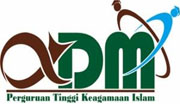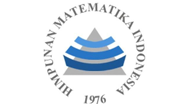IMPLEMENTATION OF SIR MODEL IN THE SPREAD OF TB INFECTIOUS DISEASES IN PEMATANGSIANTAR CITY
Abstract
The most commonly-causing disease in developing countries is tuberculosis (TBC or TB). Therefore, it is necessary to conduct an analysis that can be accepted individually or scientifically on the problem of transmission of tb tuberculosis cases in developing countries. One of them can be viewed in the form of a mathematical model. By dividing the human population into 3 groups, namely the group of susceptible individuals (susceptible to disease), hordes of infective individuals (infected with disease), and groups of recovered individuals (cured derived from disease) that's how the SIR model describes the dynamics of the spread of infectious diseases. Therefore, critical point analysis, eigen value and basic reproduction ratio are needed. Then test the parameter analysis by simulating the runge kutta method order 4, from the results of the analysis conducted we will find the rate of transmission and cure rate which is the most influential thing on the spread of tuberculosis (TBC). Thus from the occurrence of epidemics that form or decrease the rate of transmission and increase the cure rate of tuberculosis disease transmission can be controlled.
Full Text:
PDFDOI: http://dx.doi.org/10.30829/zero.v5i1.11100
Refbacks
- There are currently no refbacks.

This work is licensed under a Creative Commons Attribution-ShareAlike 4.0 International License.
Publisher : Department of Mathematics Faculty of Science and Technology Universitas Islam Negeri Sumatera Utara Medan | |
✉️ Email: zero_journal@uinsu.ac.id 📱 WhatsApp:085270009767 (Admin Official) | |
 |  |  |  |  |



